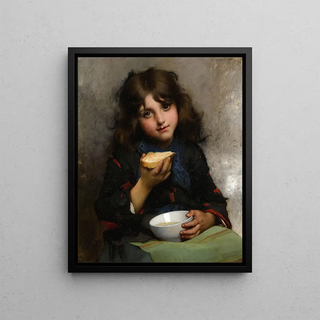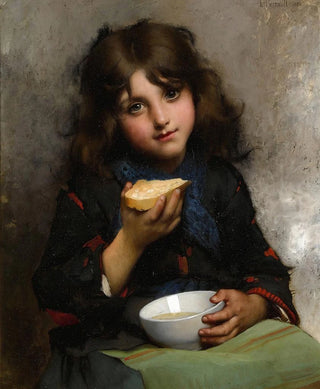Art print | Le Goûter - Léon Jean-Basile Perrault


View from behind

Frame (optional)
In the fascinating world of art, some works manage to capture the essence of a moment, an emotion, or an atmosphere. "The Tea Time" by Léon Jean-Basile Perrault is one of those creations that transports the viewer into a world filled with sweetness and intimacy. This canvas, created at the end of the 19th century, depicts a scene of family conviviality, where time seems to stand still. The characters, delicately portrayed, indulge in a moment of sharing, illustrating the importance of human relationships in everyday life. Through this art print, the spirit of the original work is revealed, inviting everyone to discover this visual harmony.
Style and uniqueness of the work
Léon Jean-Basile Perrault's style is characterized by finesse in execution and particular attention to detail. In "The Tea Time," light plays a central role, illuminating the faces of the protagonists and creating a warm atmosphere. Pastel colors, soft and soothing, contribute to this intimate ambiance, while the carefully orchestrated composition guides the viewer's gaze across the scene. The expressions of the characters, filled with tenderness and complicity, demonstrate the artist's mastery in portrait art. This work also stands out for its narrative approach, where each element seems to tell a story, inviting the viewer to question the bonds that unite these figures. In this way, "The Tea Time" transcends the simple painting to become a true window into the human soul.
The artist and his influence
Léon Jean-Basile Perrault, born in 1832, was a French painter whose work is part of the realism and naturalism movement. Trained at the École des beaux-arts in Paris, he developed a style that is uniquely his own, combining a keen sense of observation with deep artistic sensitivity. His works, often inspired by everyday life, reflect a humanist and poetic vision of his era. Perrault had a notable influence on his contemporaries, notably thanks to his ability to capture fleeting moments with rare delicacy. His commitment to faithful representation of

Matte finish

View from behind

Frame (optional)
In the fascinating world of art, some works manage to capture the essence of a moment, an emotion, or an atmosphere. "The Tea Time" by Léon Jean-Basile Perrault is one of those creations that transports the viewer into a world filled with sweetness and intimacy. This canvas, created at the end of the 19th century, depicts a scene of family conviviality, where time seems to stand still. The characters, delicately portrayed, indulge in a moment of sharing, illustrating the importance of human relationships in everyday life. Through this art print, the spirit of the original work is revealed, inviting everyone to discover this visual harmony.
Style and uniqueness of the work
Léon Jean-Basile Perrault's style is characterized by finesse in execution and particular attention to detail. In "The Tea Time," light plays a central role, illuminating the faces of the protagonists and creating a warm atmosphere. Pastel colors, soft and soothing, contribute to this intimate ambiance, while the carefully orchestrated composition guides the viewer's gaze across the scene. The expressions of the characters, filled with tenderness and complicity, demonstrate the artist's mastery in portrait art. This work also stands out for its narrative approach, where each element seems to tell a story, inviting the viewer to question the bonds that unite these figures. In this way, "The Tea Time" transcends the simple painting to become a true window into the human soul.
The artist and his influence
Léon Jean-Basile Perrault, born in 1832, was a French painter whose work is part of the realism and naturalism movement. Trained at the École des beaux-arts in Paris, he developed a style that is uniquely his own, combining a keen sense of observation with deep artistic sensitivity. His works, often inspired by everyday life, reflect a humanist and poetic vision of his era. Perrault had a notable influence on his contemporaries, notably thanks to his ability to capture fleeting moments with rare delicacy. His commitment to faithful representation of






